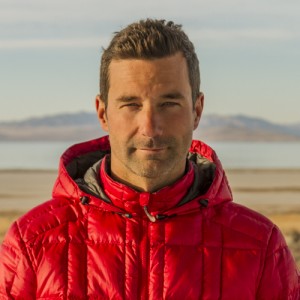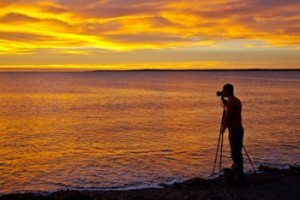This week I enjoy a wide-ranging, often philosophical, conversation with Daniel Fox, photographer, storyteller, filmmaker, kayaker, scuba diver, horseback rider & founder of the Wild Image Project.
Daniel is based in San Francisco, but travels all over the world in search of images that challenge people to reconsider their relationship with nature.
To subscribe to the show via RSS or iTunes, please click on the appropriate button below.
Show Notes
2:00 Daniel’s many roles – which is most important to him?
3:00 The Curious Explorer – what does it mean to be an explorer today?
4:40 The Wild Image Project
5:45 Is Daniel an environmentalist?
7:10 The art of persuasion: “You can’t force people to do what they don’t want to do. Everyone has to experience their own motivation to change.”
8:45 The need to create a physical connection between our lifestyle and its consequences
10:58 A year in the life, including Hawaii and Alaska
13:50 Hawaiian lava flows, as an example of Daniel’s art and philosophy: “Time is the only thing that nature has. It has all the time in the world… and yet time for us (humans) is the enemy… As a species we still haven’t found our place in the universe. We think of ourselves as so godlike and yet we are still so mortal.”
17:30 Ego and survival
19:10 Photography: what kit does Daniel use? And why you don’t need fancy gear to take good photos
23:15 Daniel’s photography aesthetic
26:15 What does Daniel want people to take away from his work?
27:50 Environmental optimism
29:42 Advice to budding photographers
33:40 How to stay in touch with Daniel
Do You See?

Everything in life is about perspective. We see the things that we want to see. (Daniel Fox)
According to a book I am reading at the moment (E-Squared, by Pam Grout), the brain receives a staggering 400 billion pieces of information every second – from our five senses, from inside our own bodies, and who knows, maybe even through other senses as well.
Our brains have amazing capacity (yes, even the brain of your dimmest co-worker), but even they cannot consciously process all that information. So we filter. We filter dramatically, down to about 2,000 pieces of information per second. That might still sound like a lot, but it’s only one-half of one-millionth of a percent of what first arrived. John Maunsell, a neuroscientist at Harvard (also quoted in E Squared) says, “People imagine they’re seeing what’s really there, but they’re not”.
How do we select what gets through the filter, and what doesn’t? Mostly, we are heavily biased towards information that reinforces our existing worldview, i.e. that makes us feel relatively secure and comfortable, and we filter out information that challenges us to think in new ways. That’s too much like hard work. And sometimes it’s not even that sophisticated – our perceptions are just plain unreliable.
For example, think of someone you know (maybe even yourself) who is vehemently in belief or in denial of climate change. When you see an article that presents the opposing point of view, what is your attitude as you read it? Open-minded, or skeptical? Even if the case presented was compelling, could it change your mind?
Or have you read about the notorious unreliability of eyewitnesses to crimes?
If you want to test your own reliability as an observer, try this test.
And for an amusing look at how people fail to notice the obvious, try this video: (I can’t watch this video here in the UK, but I post the link here just in case you can watch it where you are – and I hope I got the right one!)
And, of course, please check out Daniel’s fine art photographs, and see if they prompt you to see the world around you through different eyes.
I hope that by now your perception of the world might be subtly different, that you might be at least open to the possibility that everything you see might not be everything there is.

I’m going to try an exercise for the next 24 hours, and I invite you to join me. Try to see something that you haven’t seen before. I don’t mean you should literally go out of your way to find something new – in fact, this experiment will work better if you don’t. Just try to notice something in your same old familiar surroundings that you haven’t seen before. Maybe look closer, to see something small. Or look at the bigger picture. Or look higher, or lower, or inside.
Please post a comment and tell me what you see.
And as we do this experiment, I hope it reminds us that everything we see is NOT all there is, that there are always new worlds waiting to be discovered, even right underneath our noses.
Links:

Great interview!!!
Glad you enjoyed it as much as I did! 🙂
Thanks Roz for great interviews…keep it up…you have to be #1…great interview…Thanks Daniel for all that you bring to us as well as Roz
Daniel was such a great interviewee – how could I go wrong?! 🙂
This funning looking little hand-made clay bird sits on the dining room table, and I never noticed that its wings are not symmetrical. I assumed they were identical.
Wish I could see it! Does Disqus allow you to post a photo?!
Can you see the differences?
Hand crafted in Marin County (or perhaps elsewhere)
In Marin County there could be many explanations for the bird being a bit whacky! 🙂